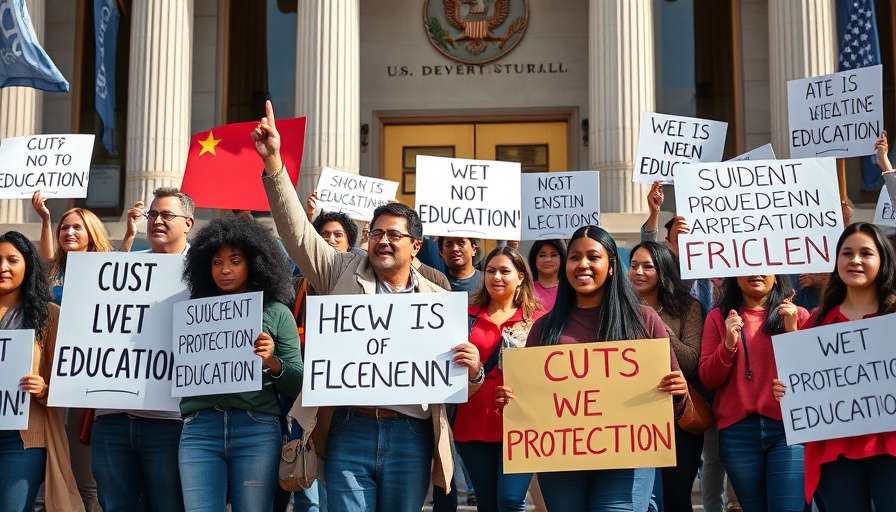
Education Department Cuts Could Endanger Future for Kids with Disabilities
In a worrying trend, the recent cuts to the Education Department under the Trump administration may drastically impact families of children with disabilities. The Department's workforce has halved in size since Trump took office and numerous programs intended to support students with special needs are now at risk. More than 1,300 employees have already been laid off, signaling a potentially bleak future for the vital services these families rely on.
The Individuals with Disabilities Education Act (IDEA) ensures that around 7.5 million students in U.S. public schools have a right to a free and appropriate public education, along with the necessary supports like speech therapy and mobility aids. The recent staff reductions could severely hamper the enforceability of this critical law, leaving students vulnerable to inadequate educational environments.
As the cuts to the Education Department continue, previously funded programs, such as those assisting with vocational transitions for disabled students and grants for schools providing essential services, face the risk of termination. Families are expressing their fears regarding delayed funding that could affect their children's education. The potential dismantling of IDEA under the current government leads many advocates to fear a reversion to institutionalizing disabled children, reminiscent of the unethical practices of the past.
Understanding the Broader Impact on Community
Beyond the immediate consequences for students with disabilities, these cuts pose a broader concern within the educational community and raise pressing questions about equity and accessibility. The Education Department plays a crucial role in ensuring that all students, regardless of their backgrounds or abilities, have a pathway to success. The impending staff cuts threaten to narrow this pathway considerably.
Adjusting to Educational Disparities
With more focus shifting toward potential voucher systems—promoted as a solution to fund educational opportunities—many worry that public schools, particularly those serving disadvantaged populations, will bear the brunt of financial constraints. Private institutions, which often lack obligations to accommodate disabled students, won’t replace the holistic systems that public schools currently offer. This shift could further disenfranchise disabled students and their families.
Strategies for Advocacy
In light of these developments, it becomes crucial for families and communities to engage in advocacy efforts. Building awareness and voicing concerns by contacting local representatives could foster changes necessary to secure continued support for education programs and protections under IDEA. Educational policies are not just educational issues but social justice ones. Collaborating with organizations engaged in disability advocacy ensures that students are represented in every conversation.
The time to act is now as the implications of these cuts extend far beyond just educational institutions; they strike at the very core of societal equity. Families of students with disabilities, educators, and advocates alike must stand united in this fight to safeguard the future of education for all children.
 Add Row
Add Row  Add
Add 



Write A Comment